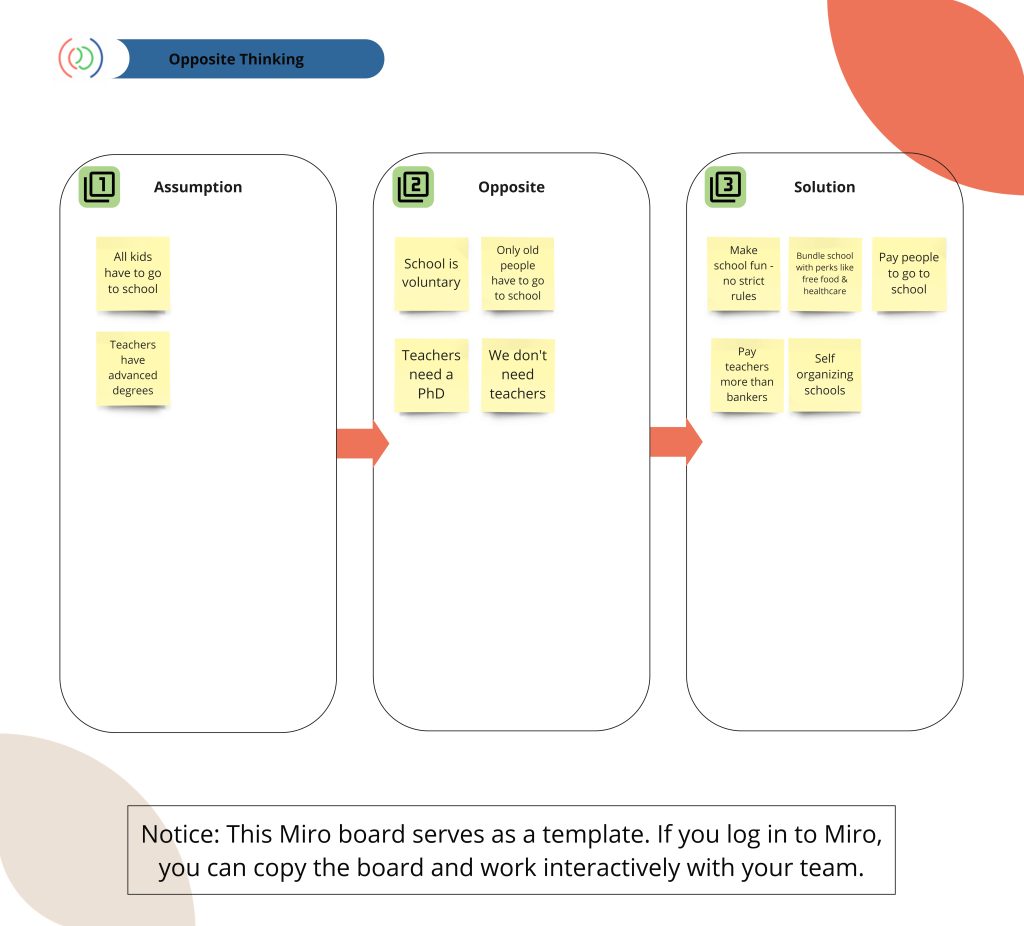
Opposite thinking is a great way to come up with new ideas. It makes you question basic assumptions and the status-quo by turning them around. Even though it might be hard to imagine the opposite, it's a perfect way to start thinking creatively because it lets you forget about any limits or rules.